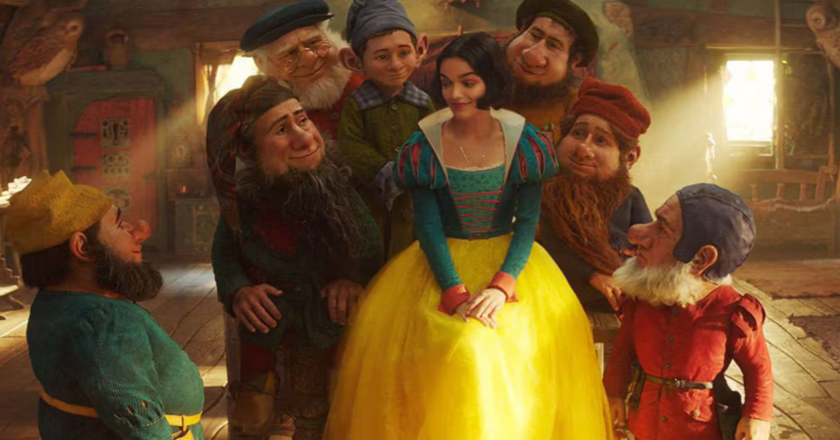In Sept. 2022, at the Disney 23 Expo, a clip of the upcoming Snow White live-action remake was shown. Immediately following this showcase, pushback against the movie occurred. The seven dwarves are purely CGI, and the beloved Snow White is being played by Rachel Zegler, an actor of Latin descent.
More relevant to GA, are the notions of AI, CGI, and the emergence of deep fakes in the film industry. The seven dwarves that accompany Snow White are played by a single actor. In scenes with multiple dwarves, CGI is used to portray the dwarves.
This follows the trend in both Hollywood and real life. While CGI is conventionally used to animate scenes and backgrounds, using CGI for an entire character has yet to be done to the scale at which Disney has been doing in the remake.
“There’s this concept in cybernetics called the uncanny valley,” computer science teacher Jason Oswald said. “Where if you get close to something that looks like a human, but still doesn’t, then people will get agitated.”
The uncanny valley idea is quite pertinent to the CGI being used. We are getting closer to CGI humans being indistinguishable from real humans, however, we have not hit the point in Hollywood where people have started to resist CGI. Nonetheless, we are fast approaching that point of agitation. While this can be scary, it is only one more facet of our lives being connected to AI and algorithms.
This shift to more AI, CGI, and even deep fakes is going to be shaping Hollywood as we know it. Chat engines much like ChatGPT could begin playing greater roles in scripts that are being read, and the faces you see may have been created by a single actor.
“There’s been a sort of emerging theme of the loss of originality,” Mr. Oswald said. “You’re coming up with an original movie, say John Wick, and then you’re having three sequels of John Wick.”
“I think this style of Hollywood production has been criticized for a long time,” Mr. Oswald continued. “And so the idea of computer generation and computer-assisted production was established before AI came into it.”
Even if AI starts to play a bigger role in the content we consume, Hollywood is a place of stagnant ideas. If AI continues the trend of creating sequels, the stories we consume may remain largely unchanged.
AI learns their tasks based on millions of examples known as training data. Training data can have variance, but it should not be skewed too much. As a result, AI has a small window in the problems it accomplishes, but that problem is solved quickly and well. In Hollywood, we may see many small AI’s accomplishing minor tasks.
While computer generation and AI is a quickly developing phenomenon in the film industry, many computer science students in Mr. Oswald’s class believe that AI will never fully take over Hollywood.
“We will see more CGI and Chat engines in Hollywood,” Aarav Kevadia ’26 said. “But humans will always be there.”
“Hollywood will most likely never be run by AI,” Max Kopp ’26 said. “The jobs at Hollywood are simply too broad for AI to handle.”
While AI is powerful in the tasks it undertakes, the problem is too large for AI’s that specialize in repeatable and narrow actions, so controlling a multi-billion dollar industry is a huge task. As AI starts to become more common in our everyday lives, certain repeatable tasks may be left for the machines, but humans will likely be required to oversee each AI and their creations.

